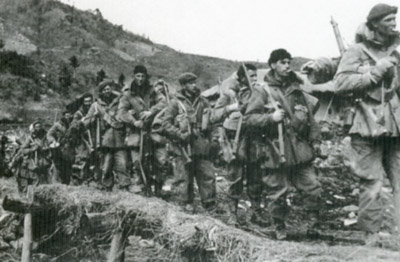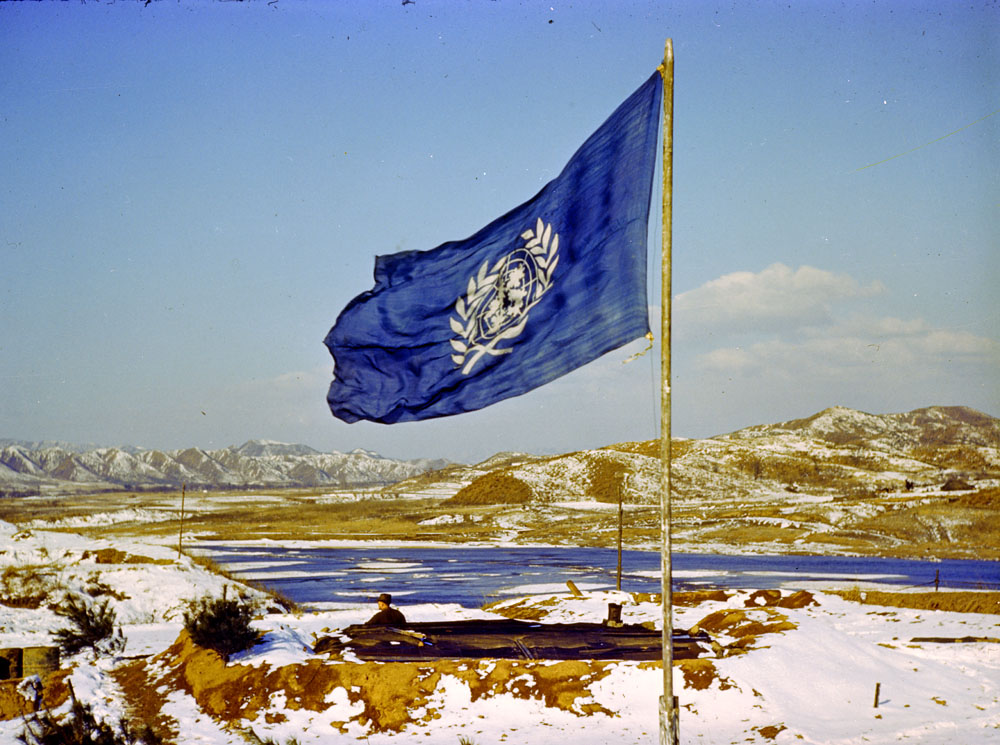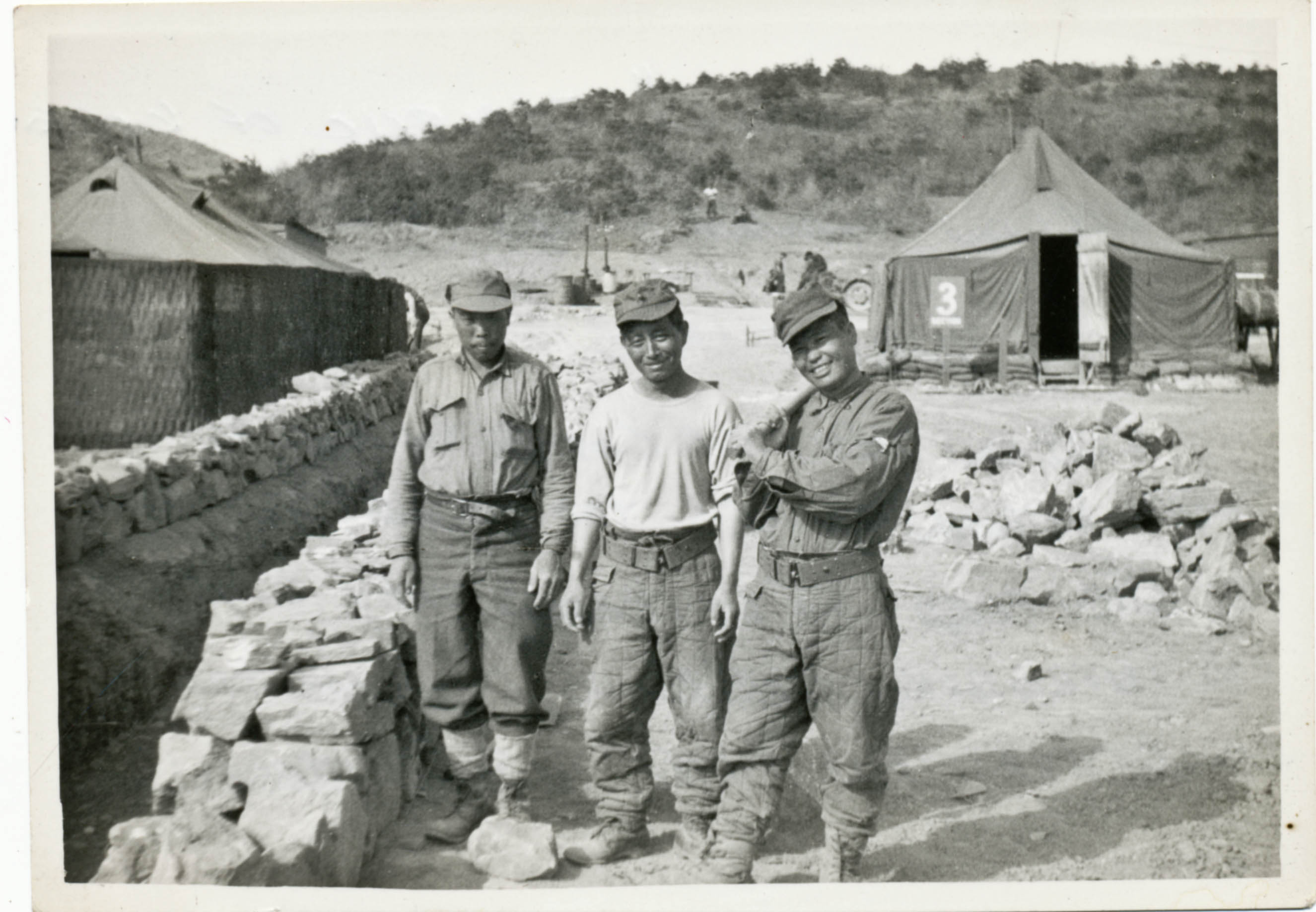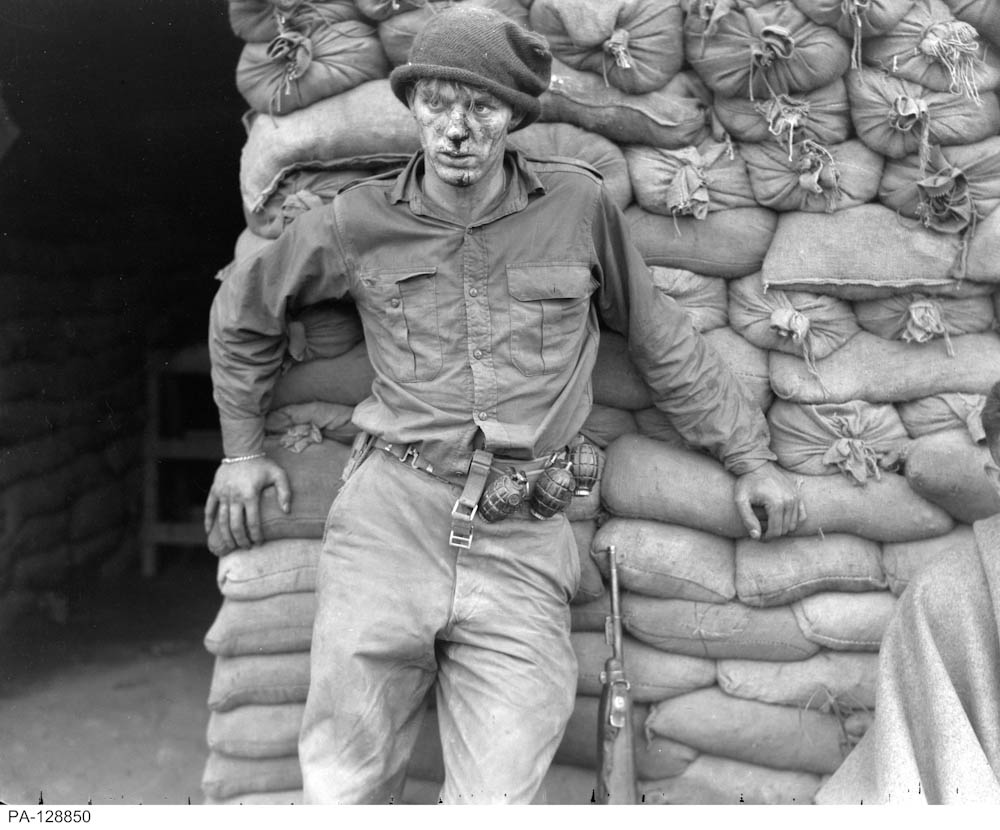The Korean War began 25 June 1950, when North Korean armed forces invaded South Korea. The war’s combat phase lasted until an armistice was signed 27 July 1953. Canadian military personnel were part of a United Nations (UN) force consisting of 16 countries; 26,791 Canadians served during the combat phase and nearly 7,000 served as peacekeepers from 1953 to 1957. The last Canadian military personnel left Korea in 1957. After the two world wars, Korea remains Canada’s third-bloodiest overseas conflict, taking the lives of 516 Canadians and wounding more than 1,200. In total, an estimated three million people died during the war. More than half were civilians. The two Koreas remain technically at war today.
Korean War Facts
| Date | 25 June 1950–27 July 1953 (combat phase) |
| Location | North Korea, South Korea |
| Participants | South Korea, UN (US was biggest contributor; also included units from Canada, Australia and other countries)
North Korea, China |
| Canadian Casualties | 516 dead (312 killed in action), 1,202 wounded, 32 taken prisoner |
Korean Peninsula Divided
Late in the Second World War, the Japanese-held Korean peninsula was liberated by both Soviet and American armed forces. Soviet troops occupied the country north of the 38th parallel, with the Americans to the south. After the war, the Soviets, Americans, and their Korean supporters could not agree on the country’s government. The United Nations Temporary Commission on Korea, which included Canadian members, oversaw elections in May 1948, but the Soviets forbid these elections in the north. The pro-West Republic of Korea (ROK) was then founded in the south and not long after, the communist Democratic People’s Republic of Korea was declared in the north. Both governments sought to unify all of Korea and civil war broke out in the country in the late 1940s.
Meanwhile, in late 1949, the Chinese Civil War ended with the establishment of the communist People’s Republic of China. Communist Chinese and Soviet leaders believed that North Korea could unify Korea by force, without Western interference. The communists were emboldened by the American decision to limit assistance to the non-communist nationalist Chinese regime on the island of Formosa (Taiwan). In late June 1950, with Chinese and Soviet-supplied weapons and equipment, the North Korean Army invaded the ROK.
United Nations Intervenes
The United States led the decision to help the ROK through the UN. The UN General Assembly was dominated by Western countries. Since the Soviets were boycotting the Security Council because of the UN's refusal to include the new communist Chinese regime as one of its five permanent members, the Soviets could not exercise a veto. The Security Council thus condemned North Korean aggression and called on UN members "to render every assistance" to the ROK. On 28 June 1950, Lester B. Pearson, Canada's Secretary of State for External Affairs, encouraged a Canadian response through the UN, and under US military leadership. In the government's view, Canada would fight for the UN and the principle of collective security.

Canada’s Military Commitments
Initially, Canada contributed three Royal Canadian Navy destroyers (HMCS Athabaskan, HMCS Cayuga, and HMCS Sioux) and a Royal Canadian Air Force transport squadron, No. 426 “Thunderbird” Squadron. American, UN, and domestic pressure then led to Prime Minister Louis St. Laurent’s announcement on 7 August 1950 of a Canadian Army Special Force (CASF) — later named the 25th Canadian Infantry Brigade Group — to expand the country’s UN contributions to Korea. In July 1951, it was incorporated into the 1st Commonwealth Division, which also included units from Britain, Australia, New Zealand and India.
War’s Early Phases
At first it appeared that the war would be short-lived as, under US General Douglas MacArthur, UN forces drove the North Koreans back, first to the 38th parallel, then to Korea’s border with China. However, by the end of October 1950 thousands of Chinese army "volunteers" crossed the Yalu River into North Korea, driving the UN forces back south.
Canadian Military Participation
In November 1950, the Canadian Army brigade’s 2nd Battalion, Princess Patricia's Canadian Light Infantry Regiment, was sent overseas and landed in Korea in December. In May 1951, the rest of the Canadian brigade arrived. After several months of movement by both sides, in mid-1951 the front lines became static near the 38th parallel. Until the war ended the fighting took place along these lines, mostly consisting of patrols and raids against hilltop trench positions across the area in-between UN and enemy lines, known as “No Man’s Land.” But infantry, tank, and artillery units were also involved in heavy fighting at the battles of Kapyong (22–25 April 1951), Hill 355, also known as Kowang-San, (22–25 November 1951 and 22–24 October 1952), and Hill 187 (2–3 May 1953), among many other actions.
Eight Canadian warships (including HMCS Haida) took turns in Korean waters protecting UN aircraft carriers, busting enemy trains along the coasts, and helping other onshore operations (see also Royal Canadian Navy). The air force’s transport planes ferried people and materials across the Pacific Ocean, while 22 Canadian pilots flew jet aircraft with the United States Air Force in Korea (see also Royal Canadian Air Force).
Did you know?
Sixty nursing sisters of the Royal Canadian Army Medical Corps served in Korea and Japan during the war. Another 40 women served in the Royal Canadian Air Force as flight nurses on medical evacuation flights from Japan to the US and Canada.
End of the War and Aftermath

The armistice of 27 July 1953 ended the combat phase of the Korean War. By that point, approximately 27,000 Canadian military personnel had served in the region: 23,000 Canadian Army, 3,000 RCN and 1,000 RCAF personnel. About 7,000 served as peacekeepers following the armistice; many were troops who guarded and patrolled the ROK’s side of the Demilitarized Zone (DMZ), which continues to separate the two Koreas. The transport air squadron left the region in June 1954, while ground forces remained in Korea until the end of the year. The last Canadian destroyer to leave was HMCS Sioux in September 1955. Finally, the Canadian Medical Detachment was disbanded in June 1957. All Canadian armed forces personnel who served in Korea from 1950 to 1957 are considered Korean War veterans.
Casualties
In total, 516 Canadians lost their lives during the Korean War. Of these, 309 soldiers were killed in action, died of wounds or went missing (presumed dead); three sailors on HMCS Iroquois were killed by enemy fire. According to historian Andrew Burtch, the remaining 204 deaths were accidental or due to natural causes. Eight may have died by suicide. Notably, 75 died in Canada before even reaching the Korean peninsula; this included 17 soldiers killed in November 1950 in a train wreck in Canoe River, British Columbia. Two sailors were lost when a Canadian Pacific Airlines DC-4 disappeared during transit from Vancouver to Tokyo; seven Canadian aircrew also perished, as did 29 US army and air force personnel. Approximately 1,200 Canadians were wounded during the Korean War, and 32 taken prisoner.
Memorials
The names of all 516 Canadians killed in the war are inscribed on the Canadian Tablet in the Corridor of Honour at the Korea National War Memorial and Museum in Seoul, South Korea. There is also a Monument to Canadian Fallen in the United Nations Memorial Cemetery in Busan – the only UN cemetery in the world. Approximately 2,300 servicemen are buried there, including 376 Canadians. The cemetery also includes a memorial to Commonwealth soldiers whose burial places are unknown, including 16 Canadians. Canadian participation is also honoured at the Canadian Korean War Memorial Garden in Naechon, which is located just below the hills defended by Canadian forces in the Battle of Kapyong.
In Canada, there are Gapyeong Stone Korean War memorials in Langley, British Columbia; Airdrie, Alberta; Winnipeg, Manitoba; and Brampton and Niagara Falls, Ontario. The memorials are made of stone quarried in Gapyeong, South Korea. There is also a memorial dedicated to the Battle of Kapyong on Radar Hill in the Pacific Rim National Park Reserve on Vancouver Island.

 Share on Facebook
Share on Facebook Share on X
Share on X Share by Email
Share by Email Share on Google Classroom
Share on Google Classroom




























